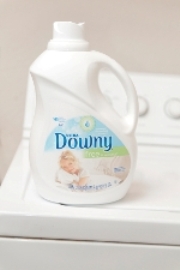Anatellô
Monthly Archive
When It's Time To 'Subtract Value.'

It can be argued that consumer needs do not change so much as the context within which those needs arise. What’s more, it is the context that provides the rich stimulus for innovation. Fail to understand the context and context changes, and you’ll fail to innovate.
An example : People have needed private transport for a long time, but the recent hikes in fuel duty (a change in the context of fuel purchasing) mean that some consumers have become more interested in fuel efficient cars.
Since the financial crisis started three years ago, the context for consumers in many markets has changed dramatically.
5 Key Recent Context Changes in Western Nations.
- Downward pressure on wages through globalisation – reduced disposable income for many.
- Inflationary pressure on household budgets
- Wealth concentration among those who are asset-rich or who have sought-after creative, knowledge or sporting skills.
- Increase in fossil fuel prices
- Shortage of housing due to reduced construction, family break up, immigration.
All these changes ( and many others too) will impact on product and service markets to different degrees and provide varying amounts of innovation opportunities.
How much has the buying context changed for your consumers and customers?
Understanding consumers and customers is of course, a never-ending process.
During the boom years circa 1995 – 2007, in many markets, consumers’ needs, attitudes and behaviours changed incrementally over many years, and often in ways that were somewhat predictable. There was a constant mass market trend upwards of consumers demanding superior features and benefits.
Now, the purchasing context in many markets has changed radically, and its taking a different direction. Large segments of consumers can now only afford a reduced number of product features.
It can be a challenge for some organizations to spot such changes. It can be an even greater challenge to act on the changes fast enough.
Proctor and Gamble have had to do this. The financial crisis has hit their consumers’ pockets hard. Household finances have been squeezed to the extent that many people are no longer able to buy the branded toiletries and household cleaners to which they were accustomed, and for which they were previously willing to pay a premium. With sharp reductions in income, many of them have now turned instead to retailer brands and discount brands.
Praise then to P&G for spotting what was happening and then acting on it smartly.
Rather than bemoaning the loss of volume of their premium bands they have moved swiftly to strengthen their discount brand portfolio and give it adequate marketing support.
Don’t underestimate what a challenge this must be within an organization where for decades they have dedicated themselves to understanding their consumers and discovering how much consumers valued each product feature and how much of a premium they were willing to pay for it.
Kano Analysis.
The Kano Analysis is of course a tool that can be used to assess which product features are important in a particular market. Consumers score the individual features as to whether they would be judged as basic features – necessary to compete in the market, performance features – the ones that help differentiate a product, and delighters. These last group are the features that consumers previously hadn’t even realized they needed. However, when they see them, they’re delighted and willing to pay significant premiums for them.
Typically over time delighters are increasingly also offered by competitors, and they become the new performance features. Ultimately, those same features are universally adopted and become basic features for the market. Meanwhile, new delighters and performance features are developed through innovation.
Proctor and Gamble have now discovered that with the financial crisis, consumer demand for product features is not always 'onward and upward'. Trend growth has stalled as consumers are no longer willing or perhaps not able to pay for some performance features any longer.
Kano Analysis could be used in such circumstances to understand which of the performance features need to be discarded to ensure that only the requisite basic features are offered. Kano could also guide marketers to determine the optimum price /value combination for the new product of a lower specification.
Such an exercise could be seen as ‘value destroying’ – but that is not the case. In some markets we have to accept, as P&G have done, that significant value has already gone, and consumers are no longer able or willing to pay for some of the premium features. At least through their customer insight processes Proctor and Gamble are capturing what value is available.
A much worse case would be continuing to offer what has become an over-specified product in a discount market. It will not sell and its owner will captures no value.
Read more about Proctor and Gamble
©AnatellÔ Ltd. All rights reserved.



